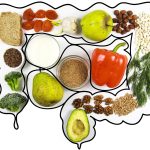How to Get Rid of Thrush in Babies: Effective Home Remedies and Medical Treatments

As an affiliate, we may earn a commission from qualifying purchases. We get commissions for purchases made through links on this website from Amazon and other third parties.
If your baby has white patches in their mouth, they may have thrush. Thrush is a common fungal infection caused by candida albicans yeast. It can affect babies and young children, and is more common in babies under 6 months old. Thrush is usually harmless but can be uncomfortable for your baby. In this article, we will discuss how to get rid of thrush in babies, including understanding thrush, treating thrush, preventing thrush reoccurrence, caring for your baby with thrush, considerations for breastfeeding mothers, when to consult a healthcare provider, and frequently asked questions.
Understanding thrush in babies is important to effectively treat and prevent it from reoccurring. Thrush can cause symptoms such as white patches on the tongue, lips, and inside of the cheeks, and can sometimes spread to the gums, roof of the mouth, and back of the throat. Your baby may also have a diaper rash caused by the same yeast. Thrush can be caused by a number of factors, including a weakened immune system, antibiotics, and breastfeeding. It is important to identify the cause of thrush to effectively treat and prevent it from recurring.
Treating thrush in babies can be done with antifungal medication, which can be prescribed by a healthcare provider. It is important to follow the recommended dosage and treatment plan to effectively get rid of thrush. There are also home remedies that can help relieve the symptoms of thrush, including wiping your baby’s mouth with a clean, damp cloth after feedings, avoiding pacifiers and bottles that are not properly cleaned, and washing your hands before and after feeding your baby.
Key Takeaways
- Thrush is a common fungal infection caused by candida albicans yeast that can affect babies and young children.
- Understanding the cause of thrush is important to effectively treat and prevent it from reoccurring.
- Treatment for thrush in babies includes antifungal medication and home remedies such as proper hygiene and avoiding pacifiers and bottles that are not properly cleaned.
Understanding Thrush in Babies
If you have noticed white patches on your baby’s tongue, cheeks, lips, or gums, your baby may have thrush. Thrush is a common fungal infection caused by Candida that can affect babies and young children. In this section, we will discuss the causes, signs and symptoms, and diagnosis process of thrush in babies.
Causes of Thrush
Thrush is caused by an overgrowth of the fungus Candida, which is naturally present in the mouth, gut, and skin. When the balance of bacteria and yeast in the body is disrupted, Candida can multiply and cause an infection. In babies, thrush can be caused by a variety of factors, including:
- Antibiotics: Antibiotics can kill the bacteria that keep yeast in check, allowing Candida to grow unchecked.
- Weakened immune system: A weak immune system can make it easier for Candida to cause an infection.
- Breastfeeding: Thrush can be passed from a mother’s nipples to her baby’s mouth during breastfeeding.
Signs and Symptoms
The most common sign of thrush in babies is white patches on the tongue, cheeks, lips, or gums. These patches may resemble cottage cheese and can be difficult to wipe away. In addition to white patches, thrush may cause:
- Redness or soreness in the mouth
- Fussiness or irritability during feeding
- Refusal to feed
- Diaper rash
If you notice any of these symptoms in your baby, it is important to see a healthcare provider for a diagnosis.
Diagnosis Process
To diagnose thrush in babies, a healthcare provider will examine your baby’s mouth and look for white patches on the tongue, cheeks, lips, or gums. In some cases, a sample of the white patches may be taken and sent to a lab for testing to confirm the presence of Candida.
It is important to get an accurate diagnosis to ensure that your baby receives the appropriate treatment. In the next section, we will discuss the treatment options for thrush in babies.
Treating Thrush
If your baby has thrush, there are several treatment options available. In this section, we will discuss medical treatment options, prescribed antifungal medications, and home remedies and natural treatments.
Medical Treatment Options
If your baby has thrush, you should take them to see a doctor or pediatrician. They will be able to diagnose the condition and recommend the best course of treatment. In most cases, the doctor will prescribe an antifungal medication to treat the thrush.
Prescribed Antifungal Medications
The most common antifungal medication used to treat thrush in babies is nystatin. Nystatin is an antifungal medication that is used to treat a variety of fungal infections. It works by stopping the growth of the fungus that causes thrush.
Other antifungal medications that may be prescribed for thrush include fluconazole and clotrimazole. These medications are usually prescribed if nystatin is not effective or if the thrush is severe.
Home Remedies and Natural Treatments
In addition to medical treatment options, there are also several home remedies and natural treatments that can help to treat thrush in babies. Some of these remedies include:
- Baking soda: Mix baking soda with water to create a paste and apply it to the affected area.
- Gentian violet: Gentian violet is a natural antiseptic that can be used to treat thrush. It is available over-the-counter and can be applied directly to the affected area.
- Coconut oil: Coconut oil is a natural antifungal and can be used to treat thrush. Apply a small amount of coconut oil to the affected area.
It is important to note that while home remedies and natural treatments can be effective in treating thrush, they should not be used as a substitute for medical treatment. If your baby has thrush, it is important to seek medical advice from a doctor or pediatrician.
Preventing Thrush Reoccurrence
Once you have treated your baby’s thrush, it is important to take steps to prevent it from returning. Here are some measures you can take to prevent reoccurrence:
Hygiene and Cleaning Practices
Maintaining good hygiene and cleaning practices can help prevent the overgrowth of yeast that causes thrush. Make sure to clean your baby’s mouth and gums regularly, especially after feeding. You can use a clean, damp cloth or gauze to gently wipe their mouth. Also, be sure to clean and sterilize any pacifiers, bottle nipples, or other feeding equipment your baby uses.
Dietary Considerations
Certain foods can contribute to the overgrowth of yeast in the body, so it is important to be mindful of your baby’s diet. Avoid giving your baby sugary or processed foods, as well as foods that contain yeast or mold. Instead, opt for a diet that is rich in whole foods, such as fruits, vegetables, and lean proteins.
Strengthening the Immune System
A strong immune system can help prevent the overgrowth of yeast that causes thrush. To help strengthen your baby’s immune system, make sure they are getting enough sleep, exercise, and fresh air. You can also consider giving them probiotics, which can help support a healthy balance of gut bacteria.
By following these measures, you can help prevent reoccurrence of thrush in your baby. Remember, if you notice any signs of thrush returning, such as white patches in their mouth or fussiness during feeding, be sure to contact your healthcare provider.
Caring for a Baby with Thrush
If your baby has been diagnosed with thrush, there are a few things you can do to help manage their discomfort and pain and ensure they respond well to treatment. Here are some tips:
Managing Discomfort and Pain
Thrush can cause pain and discomfort in your baby’s mouth, making it difficult for them to eat or swallow. To help alleviate their discomfort, try the following:
- Use a clean finger or gauze pad to gently wipe the inside of your baby’s mouth and remove any visible white patches.
- Offer your baby a cool, wet washcloth or teething ring to chew on.
- Apply a small amount of 1% hydrocortisone cream to the affected areas of your baby’s mouth to help reduce inflammation and pain. Be sure to follow your doctor’s instructions and only use the cream as directed.
Feeding Techniques
If your baby is having trouble feeding due to thrush, there are a few things you can do to help:
- Offer smaller, more frequent feedings to help your baby stay hydrated and nourished.
- If you’re breastfeeding, consider pumping your milk and feeding it to your baby with a bottle until the thrush clears up. Be sure to sterilize all bottle nipples and pacifiers after each use to prevent reinfection.
- If you’re bottle-feeding, be sure to sterilize all bottles, nipples, and other feeding equipment after each use to prevent reinfection.
Monitoring Baby’s Response to Treatment
Thrush can usually be treated with antifungal medications, but it’s important to monitor your baby’s response to treatment and follow up with your doctor as needed. Here are some things to keep in mind:
- Be sure to give your baby their medication as directed, even if their symptoms improve.
- Watch for signs of worsening symptoms, such as increased pain or redness in your baby’s mouth.
- Follow up with your doctor as recommended to ensure the thrush has fully cleared up.
By following these tips, you can help manage your baby’s discomfort and pain and ensure they respond well to treatment for thrush.
Considerations for Breastfeeding Mothers
Breastfeeding mothers with thrush on their nipples can experience pain and discomfort while nursing their baby. However, there are several ways to treat and prevent the transmission of thrush to your baby.
Treating Thrush on Nipples
To treat thrush on your nipples, you can use antifungal creams or ointments, such as miconazole or clotrimazole. Apply the cream or ointment as directed by your healthcare provider. You may also need to take oral antifungal medication if the thrush is severe or does not respond to topical treatment.
It is important to continue breastfeeding while treating thrush on your nipples. However, you should avoid using nursing pads that contain plastic liners, as they can trap moisture and promote the growth of yeast. Instead, use cotton nursing pads and change them frequently.
Preventing Transmission to Baby
To prevent the transmission of thrush to your baby, it is important to maintain good hygiene practices. Wash your hands before and after breastfeeding, and clean your baby’s mouth with a clean, damp cloth after each feeding.
You should also sterilize any pacifiers, bottles, or breast pump parts that come into contact with your baby’s mouth. Boil these items for at least five minutes or use a sterilizing solution.
Breastfeeding Practices and Thrush
Breastfeeding practices can also impact the development and transmission of thrush. It is important to ensure that your baby is latching correctly and that your nipples are not sore or cracked. If you experience sore nipples, you may need to adjust your baby’s latch or use a nipple shield.
You should also avoid using any creams or lotions on your nipples that may promote the growth of yeast. Instead, allow your nipples to air dry after breastfeeding and avoid wearing tight-fitting clothing that can trap moisture.
By following these guidelines, you can effectively treat thrush on your nipples and prevent the transmission of thrush to your baby. If you have any concerns or questions, consult with your healthcare provider.
When to Consult a Healthcare Provider
Thrush in babies is a common condition that can usually be treated at home. However, there are cases where medical treatment may be necessary. If you notice any of the following symptoms or conditions, it is important to consult a healthcare provider:
Severe Cases and Complications
- If your baby’s thrush does not improve after a week of treatment, or if the symptoms get worse, you should consult a healthcare provider. They may recommend a different treatment or prescribe medication to help clear up the infection.
- If your baby has a weakened immune system, they may be at risk of developing more severe cases of thrush. In these cases, medical treatment may be necessary to prevent the infection from spreading to other parts of the body.
- If the thrush spreads to other parts of your baby’s body, such as the skin or lungs, it is important to seek medical treatment as soon as possible. These cases can be more difficult to treat and may require hospitalization.
Follow-Up Visits and Ongoing Care
- Even if your baby’s thrush clears up after treatment, it is important to follow up with your healthcare provider to ensure that the infection does not return. Your doctor may recommend regular check-ups to monitor your baby’s health.
- If your baby experiences any side effects from the treatment, such as a rash or upset stomach, you should consult a healthcare provider. They may recommend a different treatment or adjust the dosage to minimize side effects.
- Your healthcare provider may also provide instructions on how to prevent thrush from returning, such as practicing good oral hygiene and avoiding the use of pacifiers or bottles that have been contaminated with the infection.
Remember, thrush in babies is a common condition that can usually be treated at home. However, if you notice any severe symptoms or complications, it is important to consult a healthcare provider. They can provide medical treatment and instructions on how to prevent the infection from returning.
Frequently Asked Questions
What are effective home remedies for treating thrush in an infant’s mouth?
There are several home remedies you can try to treat thrush in your baby’s mouth. One of the most effective is to apply a small amount of plain yogurt to the inside of your baby’s mouth with a clean finger or cotton swab. You can also use a mixture of baking soda and water to rinse your baby’s mouth. Another option is to apply coconut oil to the affected area.
Which over-the-counter medications are safe for baby thrush treatment?
There are several over-the-counter medications that are safe for treating thrush in babies. Some examples include Nystatin, Miconazole, and Clotrimazole. However, it’s important to talk to your pediatrician before using any medication on your baby.
What are the common symptoms indicating my baby might have thrush?
Common symptoms of thrush in infants include white patches on the tongue, gums, or inside of the cheeks, fussiness during feeding, and a diaper rash that doesn’t go away with traditional treatment. If you notice any of these symptoms, it’s important to talk to your pediatrician.
What feeding techniques should I use for a baby suffering from thrush?
If your baby has thrush, it’s important to continue breastfeeding or bottle-feeding as usual. However, you may want to consider pumping and bottle-feeding for a few days to give your baby’s mouth a chance to heal. It’s also important to clean your baby’s feeding equipment thoroughly after each use.
How can I prevent my infant from developing oral thrush?
To prevent your baby from developing oral thrush, it’s important to keep their mouth and feeding equipment clean. You should also avoid giving your baby pacifiers or bottles that have been in their mouth for an extended period of time. Additionally, make sure to sterilize your baby’s feeding equipment regularly.
Is it common for thrush to resolve on its own in infants, and how can I tell?
In some cases, thrush may resolve on its own without any treatment. However, it’s important to talk to your pediatrician if you suspect your baby has thrush. They can help determine the best course of action for your baby’s specific situation.
About Us
Our goal is to empower you with concise probiotic guidance for a healthier gut. With expert advice, we provide the knowledge to improve your well-being and navigate the world of probiotics efficiently, ensuring you achieve optimal gut health.
- Can You Take Probiotics While Water Fasting?
- Does Fasting Help Microbiome Diversity and Functionality?
- Does Fasting Help Your Bowels
- Does Fasting Help Probiotics? Understanding Gut Health Benefits
- Does Fasting Help the Gut: Understanding the Impact on Digestive Health
Disclaimer
As an affiliate, we may earn a commission from qualifying purchases. We get commissions for purchases made through links on this website from Amazon and other third parties.
Check these out on Amazon









